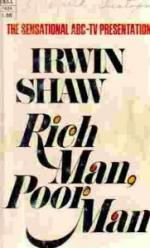|
This section contains 239 words (approx. 1 page at 400 words per page) |

|
The family saga is a popular form of fiction that originated in Victorian England. In nineteenth-century England, as in twentieth-century America, the rapid growth of prosperity in society as a whole made possible a rapid rise of many individuals. William Makepeace Thackeray's The Newcomers (1855), Charles Dickens' Great Expectations (1858), and Anthony Trollope's The Way We Live Now (1872) are just three early examples of fiction dealing with the effects of economic change on family life from generation to generation. In Victorian fiction the hero or heroine's challenge is to marry for love and for secure sufficient income to live comfortably. The family saga is the romance — or the fairy tale — of the middle class aspiration that children find more social success and acceptance than their parents. The modern progenitor of the family saga novel is John Galsworthy's The Forsyte Saga (1922), a trilogy about the Soames clan...
|
This section contains 239 words (approx. 1 page at 400 words per page) |

|




